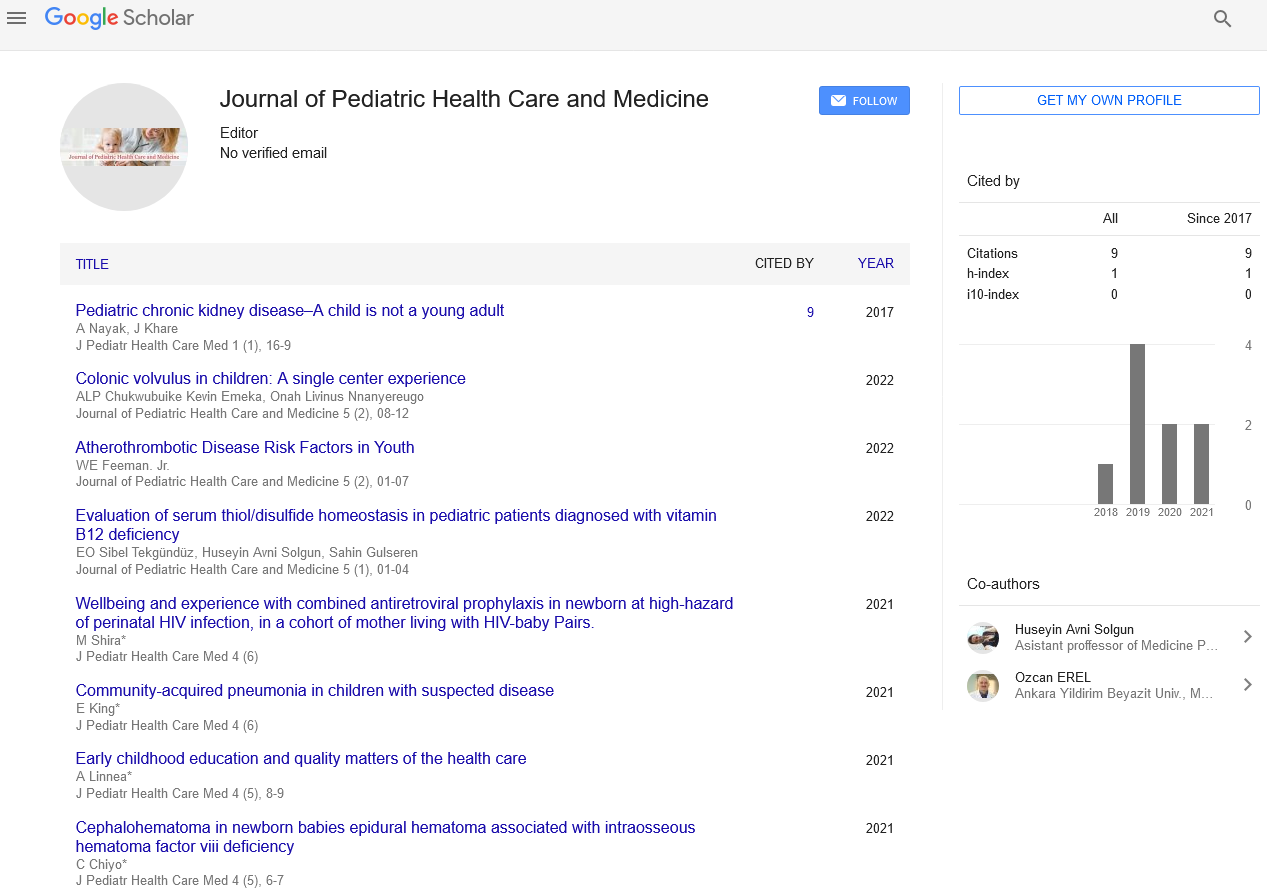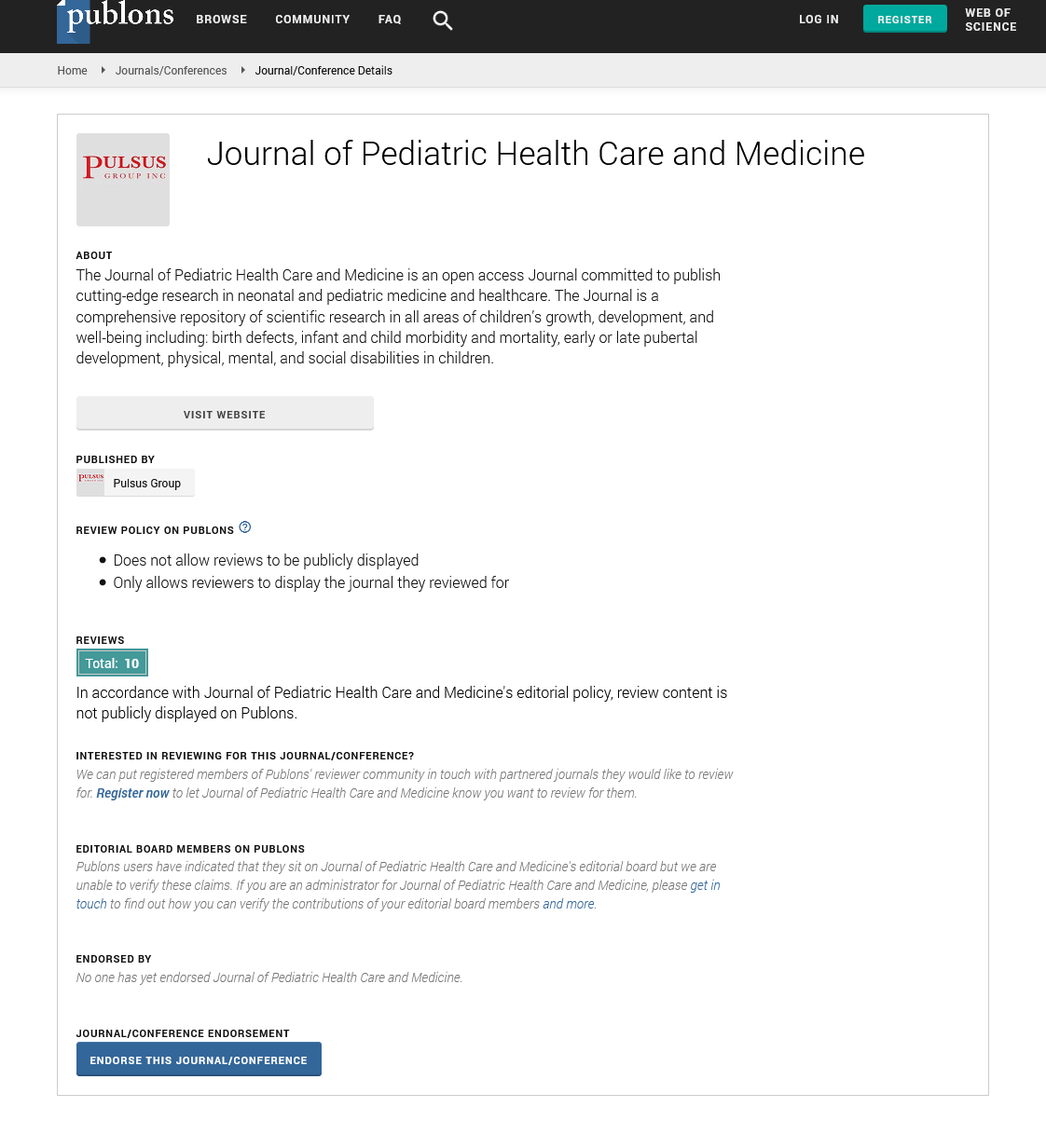Exactness Medication In Pediatric Oncology
#Equally contribution
Received: 13-Apr-2021 Accepted Date: Apr 29, 2021; Published: 11-May-2021
Citation: Chintala Amala, Department of Pharmacology, Osmania University, Hyderabad, India, e-mail prasanna.k@gmail.com
This open-access article is distributed under the terms of the Creative Commons Attribution Non-Commercial License (CC BY-NC) (http://creativecommons.org/licenses/by-nc/4.0/), which permits reuse, distribution and reproduction of the article, provided that the original work is properly cited and the reuse is restricted to noncommercial purposes. For commercial reuse, contact reprints@pulsus.com
Abstract
The current survey portrays ongoing advances and extraordinary difficulties in exactness medication for pediatric malignant growths and features clinical preliminaries evaluating the clinical effect of focused treatment coordinated to sub-atomic adjustments distinguished by tumor profiling. The essential consequences of the first round of pediatric accuracy oncology clinical preliminaries will give us a more prominent comprehension of the clinical effect of connecting tumor profiling to choice of focused treatments. The conglomeration of sequencing and clinical information from these preliminaries and the consequences of biologic examinations.
Abstract
The current survey portrays ongoing advances and extraordinary difficulties in exactness medication for pediatric malignant growths and features clinical preliminaries evaluating the clinical effect of focused treatment coordinated to sub-atomic adjustments distinguished by tumor profiling. The essential consequences of the first round of pediatric accuracy oncology clinical preliminaries will give us a more prominent comprehension of the clinical effect of connecting tumor profiling to choice of focused treatments. The conglomeration of sequencing and clinical information from these preliminaries and the consequences of biologic examinations
Keywords
Molecular profiling, Pediatric cancer, Precision medicine
Introduction
Over the most recent 50 years, there has been critical improvement in results for youngsters with malignant growth, driven fundamentally by hazard separation and increase of cytotoxic chemotherapy combined with multimodality treatment approaches [1]. However there is as yet a need to improve results for all youngsters with malignancy, with consideration zeroed in on expanding endurance in those with a helpless guess and diminishing genuine late symptoms of multimodality treatment.
The current audit centers around the current methodology in pediatric oncology to appraisal of the disease genome to consolidate focused on treatments in clinical preliminaries and at last norm of care treatment. A definitive objective of exactness medication is something similar in pediatric oncology all things considered in different strengths: to fix more patients and limit both short and long haul results related current medicines [2].
As accuracy oncology is another field, we have characterized generally utilized terms used all through this auditOver the previous decade, cutting edge sequencing was utilized as one of the initials steps in characterizing the genomic highlights of the most widely recognized pediatric malignant growth analyze. The finished revelation sequencing considers were investigated at the National Cancer Institute (NCI) Childhood Cancer Genomics Gaps and Opportunities Workshop in February 2015 [3]. A refreshed rundown of revelation sequencing concentrates in pediatric malignancies.
Notwithstanding continuous advancement in enormous scope revelation sequencing projects in pediatric malignancies, for most of pediatric disease analyze, just few tumor–typical sets have been exposed to complete sequencing [4–8]. Therefore, for most conclusions, these revelation sequencing examines are underpowered to preclude the presence of repetitive changes happening with an occurrence as high as 5–10% of cases [9]. Likewise, the genomics of numerous uncommon pediatric malignant growth types have not been sufficiently considered and few examples from repetitive infection have been sequenced.
Finished disclosure sequencing contemplates have uncovered significant parts of the pediatric disease genome. Contrasted and grown-up diseases, pediatric malignancies harbor far less amino corrosive changing transformations per megabase of DNA. Segmental chromosomal changes, combinations and changes in qualities affecting the epigenome are significant genomic instruments of threatening change in youth malignancies.
Notwithstanding these perceptions, revelation sequencing considers have assisted sub-atomic arrangement of certain sicknesses including ID of highhazard genomic highlights that are related with visualization and guide therapy separation in a few regular pediatric malignancies like leukemia and medulloblastoma.
Nonetheless, revelation sequencing examines are not intended to survey the practicality of the normal exhibition of genomic profiling in the center, nor do they assess the capacity to break down and decipher singular patient-level sequencing results that will advise ways to deal with patient treatment and clinical preliminaries choice. Clinical sequencing contemplates, in which sequencing results are returned normally after the testing is acted in a clinical lab, are needed to resolve these inquiries.
Conclusion
The field of exactness medication in pediatric oncology has seen various advances somewhat recently, and there are presently a scope of accuracy preliminaries accessible for kids with malignancy. The underlying arrangement of pediatric accuracy oncology preliminaries will improve our comprehension of the clinical effect of focused treatments. Correlative science contemplates inserted in these exactness preliminaries, (for example, endeavors to utilize cell free DNA examines for identifying quality
REFERENCES
- 1. Siegel RL, Miller KD, Jemal A. Cancer statistics. CA Cancer J Clin 2016; 66:7–30.
- 2. Armstrong GT, Chen Y, Yasui Y, et al. Reduction in late mortality among 5-year survivors of childhood cancer. N Engl J Med 2016; 374:833–842.
- 3. National Cancer Institute childhood cancer genomics gaps and opportunities: identification of research priorities workshop summary. 2015:1–33.
- 4. Loh ML, Zhang J, Harvey RC, et al. Tyrosine kinome sequencing of pediatric acute lymphoblastic leukemia: a report from the Children's Oncology Group TARGET Project. Blood 2013; 121:485–488.
- 5. Gadd S, Huff V, Walz AL, et al. A Children's Oncology Group and TARGET initiative exploring the genetic landscape of Wilms tumor. Nat Genet 2017; 49:1487–1494.






